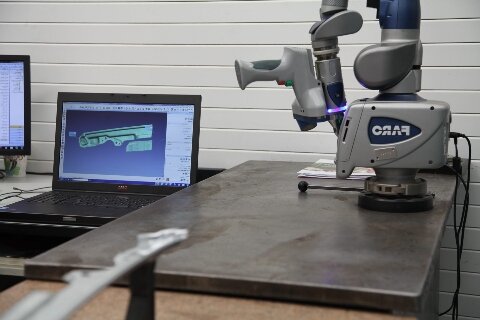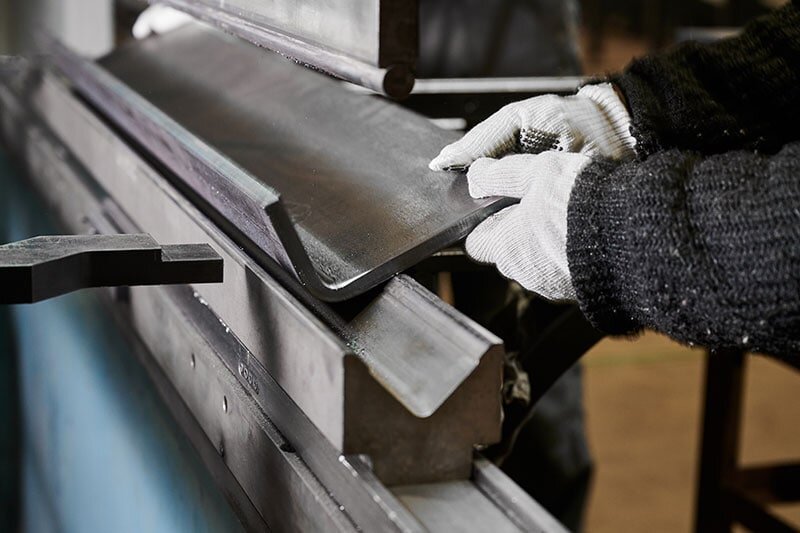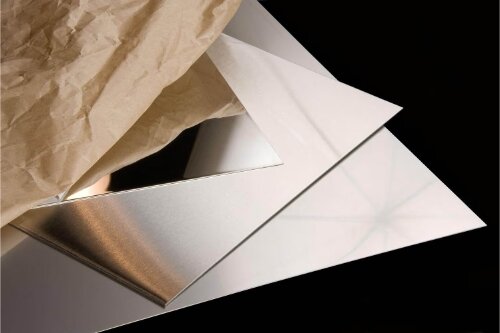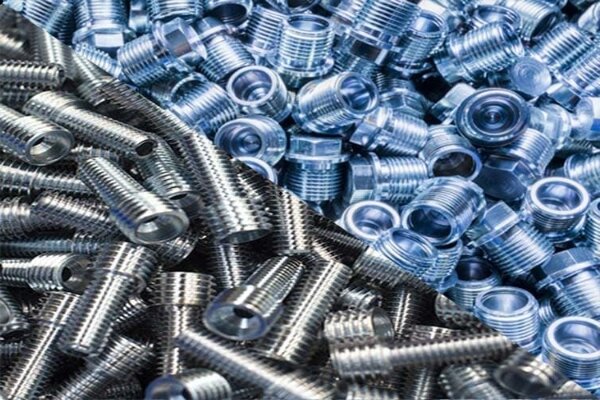عند التعامل مع النحاس الأصفر، يجب أن تعرف النوع الأفضل لمشروعك. ولكن كيف تختار النحاس الأصفر المناسب؟ يأتي النحاس بأشكال عديدة، لكل منها نقاط قوته وضعفه. قد يؤدي اختيار النوع الخاطئ إلى مشاكل في الأداء أو ارتفاع التكاليف.
النحاس الأصفر عبارة عن سبيكة من النحاس والزنك، ولكن نسبة الزنك تختلف لتكوين أنواع مختلفة. وتشمل الأنواع الأكثر شيوعاً نحاس ألفا وبيتا وألفا-بيتا. واعتماداً على الاستخدام، فإن لكل منها مواصفات مميزة، مثل مقاومة التآكل أو قابلية التشغيل الآلي.
تُستخدم سبائك النحاس الأصفر على نطاق واسع، لذا دعنا نستكشف خصائصها وأين يتم استخدامها على أفضل وجه. ستتعرف أيضًا على النوع الأكثر فعالية من حيث التكلفة لاحتياجاتك.
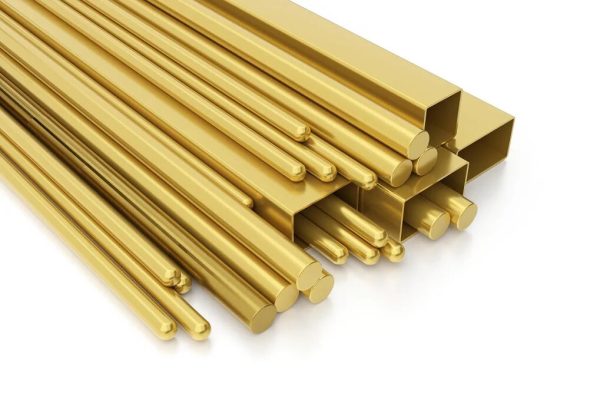
تكوين النحاس
النحاس الأصفر هو نوع من السبائك المصنوعة أساساً من النحاس. ومع ذلك، فإنه لا يقتصر على النحاس والزنك فقط. يمكن أن تختلف تركيبة سبائك النحاس الأصفر اختلافاً كبيراً، اعتماداً على الخصائص والاستخدامات المرغوبة.
العناصر الرئيسية في سبائك النحاس الأصفر
العناصر الرئيسية للنحاس الأصفر هي النحاس والزنك. ومع ذلك، يمكن أن تتغير النسبة بين هذين المعدنين لتكوين أنواع مختلفة من النحاس الأصفر.
- النحاس (النحاس): يشكل النحاس غالبية النحاس الأصفر، ويتراوح عادةً ما بين 55% إلى 95% من السبيكة. وهو يساعد النحاس الأصفر على مقاومة الصدأ ويجعله قابلاً للطرق.
- الزنك (Zn): يُضاف الزنك إلى النحاس من 5% إلى 45%. كلما زادت كمية الزنك، أصبح النحاس النحاسي أقوى وأقل مرونة.
المواد المضافة الشائعة في سبائك النحاس الأصفر
يمكن إضافة عناصر أخرى، بالإضافة إلى النحاس والزنك، إلى النحاس الأصفر لتعديل خصائصه. يمكن لهذه الإضافات أن تعزز خصائص مثل القوة أو قابلية التشغيل الآلي أو مقاومة أنواع معينة من التآكل.
- الرصاص (Pb): يُضاف الرصاص في بعض الأحيان، وعادةً ما يكون بكميات صغيرة تتراوح بين 0.51 تيرابايت إلى 21 تيرابايت إلى 3 تيرابايت. وهو يحسن من قابلية التشغيل الآلي ولكنه يستخدم بشكل أقل اليوم بسبب المخاوف البيئية.
- القصدير (Sn): تتم إضافة كميات صغيرة من القصدير، عادةً من 1% إلى 3%، لتحسين مقاومة التآكل.
- الحديد (Fe): يضاف الحديد عادةً بكميات صغيرة، تصل إلى 2%، لزيادة قوة وصلابة سبائك النحاس الأصفر.
- المنجنيز (Mn): يمكن إضافة المنجنيز في نطاق 0.51 تيرابايت إلى 21 تيرابايت إلى 3 تيرابايت لزيادة مقاومة النحاس للتآكل والقوة.
- النيكل (ني): يُستخدم النيكل، الذي يصل عادةً إلى 5%، لزيادة قوة النحاس الأصفر ومقاومته للتآكل.
الأنواع الشائعة من النحاس الأصفر ومواصفاتها
تقدم العديد من الأنواع المعروفة من سبائك النحاس الأصفر خصائص محددة تجعلها مناسبة للاستخدامات المختلفة. فيما يلي نظرة عامة على بعض سبائك النحاس الأكثر شيوعًا وخصائصها الفريدة.
خرطوشة نحاسية (C26000)
نحاس الخرطوشة هو نحاس ألفا نحاسي شائع يتكون من النحاس والزنك. وهو معروف بقابليته الممتازة للتشكيل ومقاومته للتآكل.
الخصائص الرئيسية
- تعبير:: 70% النحاس، 30% الزنك
- مرونة ممتازة: إنه قابل للتشكيل بدرجة عالية، مما يجعله مثاليًا لعمليات الختم والسحب العميق وعمليات التشكيل الأخرى.
- مقاومة جيدة للتآكل: يعمل بشكل جيد في مختلف الظروف البيئية، خاصةً المياه العذبة.
مزايا
- ليونة عالية: وهذا يجعل من السهل التعامل معها عند تصنيع الأشكال المعقدة.
- براعه: يشيع استخدامها في التطبيقات التي تتطلب قابلية ممتازة للتشغيل الآلي ومقاومة ممتازة للتآكل، مثل أغلفة الذخيرة والأطراف الكهربائية.
نحاس أصفر (C27000)
النحاس الأصفر هو نوع شائع من سبائك النحاس الأصفر يستخدم بشكل أساسي في التطبيقات التي تتطلب مقاومة جيدة للتآكل وقوة معتدلة.
الخصائص الرئيسية
- تعبير:: 65% النحاس، 35% الزنك
- قوة معتدلة: يوفر توازنًا بين القوة وقابلية التشغيل.
- مقاومة جيدة للتلطيخ: يتميز بمظهر ذهبي لامع ومقاوم للتلطيخ بمرور الوقت.
مزايا
- لمسة نهائية جذابة: يشيع استخدامه في التطبيقات التزيينية مثل المجوهرات والتجهيزات والآلات الموسيقية نظراً لمظهره اللامع.
- المقاومة للتآكل: أداء جيد في البيئات الداخلية والخارجية، خاصةً في تطبيقات السباكة.
نحاس أحمر (C23000)
النحاس الأحمر هو سبيكة نحاسية تحتوي على نسبة نحاس أعلى من الأنواع الأخرى. وهو معروف بلونه المحمر الغني ومقاومته العالية للتآكل.
الخصائص الرئيسية
- تعبير:: 85% نحاس، 5% قصدير، 5% زنك
- مقاومة ممتازة للتآكل: خاصة في البيئات القاسية مثل مياه البحر.
- قوة أفضل: النحاس الأحمر أقوى وأكثر متانة من النحاس الأصفر.
مزايا
- مقاومة فائقة للتآكل: هذا الأمر ذو قيمة خاصة للبيئات البحرية والكيميائية وغيرها من البيئات القاسية.
- قوة محسّنة: مثالية للتطبيقات التي تتطلب قوة ومقاومة للتآكل، مثل الصمامات والتجهيزات البحرية.
نحاس بحري (C46400)
النحاس النحاسي البحري عبارة عن سبيكة من النحاس والزنك مضاف إليها القصدير، مصممة خصيصاً للاستخدامات البحرية. وهو معروف بمقاومته الممتازة للتآكل، خاصةً في بيئات مياه البحر.
الخصائص الرئيسية
- تعبير:: 60% نحاس، 39% زنك، 1% قصدير
- مقاومة عالية للتآكل: خاصة في المياه المالحة والبيئات البحرية القاسية الأخرى.
- قوة جيدة: يوفر خواص ميكانيكية أفضل من النحاس الأصفر الأخرى.
مزايا
- مثالية للاستخدام البحري: نظرًا لمقاومته للتآكل، فإنه يشيع استخدامه في بناء السفن والمضخات وغيرها من الأجهزة البحرية.
- متانة: تمنحها إضافة القصدير قوة إضافية ومقاومة للتآكل، مما يجعلها مناسبة للتطبيقات عالية الإجهاد.
قطع النحاس الأصفر الحر (C36000)
النحاس الأصفر ذو القطع الحر عبارة عن سبيكة ذات قابلية عالية للتشغيل الآلي تُستخدم عادةً في عمليات التصنيع بكميات كبيرة. وغالباً ما يتم اختياره للتطبيقات التي تتطلب تشغيل آلي سريع وفعال.
الخصائص الرئيسية
- تعبير:: 61% نحاس، 35% زنك، 2-3% رصاص (يضاف عادةً من أجل قابلية التشغيل الآلي)
- قابلية تشغيل آلي ممتازة: محتوى الرصاص مثالي للتصنيع الآلي الدقيق والعمليات الآلية.
- قوة جيدة: على الرغم من أنه ليس بقوة النحاس الأصفر مثل غيره من النحاس الأصفر، إلا أنه لا يزال يوفر قوة شد مناسبة.
مزايا
- تحسين قابلية التصنيع: يسمح محتوى الرصاص بتسريع أوقات الإنتاج والدقة في عمليات التصنيع الآلي.
- فعاله من حيث التكلفه: تستخدم على نطاق واسع لصنع الأجزاء التي تتطلب إنتاج كميات كبيرة، مثل التركيبات والصمامات والبراغي.
النحاس الأصفر المقاوم للزنك (C68700)
صُمم النحاس الأصفر المقاوم للزنك خصيصًا لمقاومة إزالة الزنك، وهي عملية يترشح فيها الزنك من السبيكة، تاركًا خلفه نحاسًا مساميًا. وهذا يجعلها مثالية للاستخدام في الماء والبيئات الأخرى المسببة للتآكل.
الخصائص الرئيسية
- تعبير: يحتوي عادةً على النحاس، والزنك، وكمية صغيرة من القصدير أو عناصر السبائك الأخرى.
- مقاومة إزالة الزنك: يمنع تدهور المادة بمرور الوقت عند تعرضها للماء أو البيئات الأخرى المسببة للتآكل.
- قوة معتدلة: يوفر توازنًا بين القوة ومقاومة التآكل.
مزايا
- عمر أطول: مقاومة إزالة الزنك تجعله مثاليًا للتطبيقات التي تتضمن مياه الشرب أو المواد الكيميائية القاسية.
- ممتازة للسباكة: يشيع استخدامها في تركيبات السباكة والصمامات والمكونات الأخرى الملامسة للماء حيث يكون طول العمر أمرًا بالغ الأهمية.
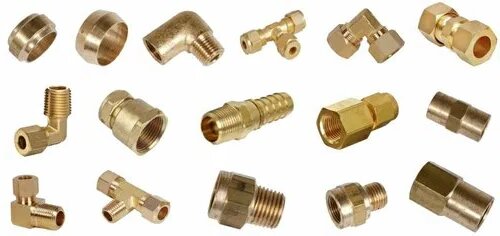
الخواص الميكانيكية للنحاس الأصفر
يوفر النحاس الأصفر توازنًا فريدًا بين القوة وقابلية التشغيل. دعونا نتفحص خصائصه الميكانيكية الرئيسية.
قوة الشد والصلابة
تشير قوة الشد إلى أقصى إجهاد يمكن أن تتحمله المادة قبل أن تنكسر، بينما تقيس الصلابة مقاومة المادة للتثبيط أو التآكل. ويوفر النحاس الأصفر عموماً قوة شد وصلابة معتدلة، اعتماداً على تركيبة سبيكته.
- قوة الشد: يتسم النحاس الأصفر عادةً بقوة شد تتراوح بين 200 و550 ميجا باسكال، اعتمادًا على السبيكة. يميل محتوى الزنك الأعلى إلى زيادة القوة ولكنه يقلل من الليونة.
- صلابة: النحاس النحاسي أكثر صلابة من النحاس النقي ولكنه أكثر ليونة من الفولاذ، مما يجعله مناسبًا للتطبيقات التي تحتاج إلى بعض الصلابة ولكن لا تتطلب صلابة شديدة.
القابلية للطرق والليونة
تشير قابلية الطَّرْق إلى قدرة المادة على الطَّرْق أو الدحرجة إلى صفائح رقيقة، في حين أن الليونة هي قدرتها على التمدد دون أن تنكسر. ويُعرف النحاس الأصفر، بمحتواه من النحاس، بقابليته للطرق والليونة.
- تطويع: يتميز النحاس الأصفر بقابلية عالية للطرق، مما يجعله مثاليًا للتشكيل في أشكال معقدة دون تشقق أو انكسار. يمكن ختمه أو ضغطه أو سحبه إلى صفائح رقيقة وأجزاء معقدة.
- ليونة: كما أن النحاس الأصفر مطيل أيضاً، مما يسمح له بالتمدد دون أن يفقد سلامته. وهذا يجعله مناسباً للموصلات الكهربائية وتركيبات السباكة، حيث يتطلب الأمر ثني أو تمدد طفيف دون أن تفشل المادة.
مقاومة التعب والإرهاق
تشير مقاومة الإعياء إلى قدرة المادة على تحمل دورات الإجهاد المتكررة دون أن تنكسر أو تفشل. يتمتع النحاس الأصفر عموماً بمقاومة إجهاد معتدلة، حيث يمكنه تحمل الإجهادات المتكررة ولكنه قد يتآكل بشكل أسرع من المواد الأكثر قوة مثل الفولاذ.
- قد تكون سبائك النحاس ذات المحتوى العالي من الزنك، مثل النحاس الأصفر بيتا، أكثر عرضة للتلف بسبب انخفاض الليونة. ومع ذلك، يمكن أن تؤدي إضافة عناصر أخرى مثل القصدير أو المنجنيز إلى تحسين مقاومة الكلال.
- التطبيقات: غالبًا ما يستخدم النحاس الأصفر في أجزاء الماكينات التي تتعرض لإجهاد دوري ولكن ليس إجهادًا شديدًا، مثل المثبتات والتروس والمكونات الميكانيكية الصغيرة.
المقاومة للتآكل
تتميز سبائك النحاس الأصفر بمقاومة عالية للتآكل، خاصةً في البيئات غير المؤكسدة مثل المياه العذبة. هذه المقاومة هي أحد أسباب استخدام النحاس الأصفر على نطاق واسع في تطبيقات السباكة والكهرباء والتطبيقات البحرية.
- مقاومة التآكل العامة: يوفر النحاس النحاسي حماية ممتازة ضد التآكل في الماء والظروف البيئية الأكثر شيوعًا. ويوفر محتوى النحاس حاجزاً طبيعياً ضد التآكل، بينما يساعد الزنك على تحسين القوة.
- مقاومة الزنك: بعض سبائك النحاس الأصفر، مثل النحاس الأصفر المقاوم للزنك، مصممة خصيصًا لمقاومة ارتشاح الزنك عند تعرضها للماء. هذه الخاصية ذات قيمة خاصة في تجهيزات السباكة والأجزاء المعرضة للرطوبة المستمرة.
- البيئات البحرية: بفضل محتواه المضاف إليه القصدير، يتفوق النحاس النحاسي البحري في البيئات البحرية من خلال توفير مقاومة فائقة للتآكل في مياه البحر.
الخواص الحرارية والكهربائية
تتميز سبائك النحاس الأصفر بخصائصها الميكانيكية بالإضافة إلى خصائصها الحرارية والكهربائية. وتعتبر هذه الخصائص مهمة عند اختيار النحاس الأصفر للتطبيقات التي تحتاج إلى التحكم في الحرارة المحددة أو التوصيل الكهربائي الجيد.
توصيل حراري
تشير الموصلية الحرارية إلى قدرة المادة على توصيل الحرارة. ويتمتع النحاس الأصفر بتوصيل حراري معتدل، مما يسمح له بأداء جيد في التطبيقات التي يكون فيها نقل الحرارة ضروريًا ولكن ليس بنفس الأهمية كما هو الحال في مواد مثل النحاس أو الألومنيوم.
- توصيل حراري: يتراوح نطاق التوصيل الحراري للنحاس عادةً بين 100 إلى 150 واط/م-ك حسب تركيبته. كلما زاد محتوى النحاس، كانت الموصلية الحرارية أفضل.
- التطبيقات: الخصائص الحرارية للنحاس النحاسي تجعله مناسبًا للمبادلات الحرارية والمشعات والمكونات الإلكترونية التي تتطلب نقل حرارة معتدل.
التوصيل الكهربائي
تقيس التوصيلية الكهربائية قدرة المادة على توصيل التيار الكهربائي. ونظراً لاحتوائه على النحاس، فإن النحاس الأصفر يُظهر توصيلية كهربائية جيدة ولكنه ليس بكفاءة النحاس النقي أو الفضة.
- التوصيل الكهربائي: تتميز سبائك النحاس الأصفر عادةً بموصلية كهربائية تتراوح بين 15% إلى 28% IACS (المعيار الدولي للنحاس الملدن)، وهي أقل من النحاس النقي الذي يبلغ 100%. يقلل محتوى الزنك العالي بشكل عام من التوصيلية الكهربائية.
- التطبيقات: بينما يُستخدم النحاس الأصفر في الموصلات الكهربائية والمفاتيح والمحطات الطرفية الكهربائية، إلا أنه غالبًا ما يتم الاحتفاظ به في الحالات التي تتطلب فعالية التكلفة والتوصيل المعتدل. وقد يكون النحاس النقي أو الفضة النقية خياراً أفضل للمكونات الكهربائية عالية الأداء.
نقاط انصهار أنواع النحاس المختلفة
تتميز سبائك النحاس الأصفر بدرجات انصهار متفاوتة اعتمادًا على تركيبها، وتتأثر في المقام الأول بمحتوى الزنك. وتُعد درجة الانصهار مهمة في تحديد مدى ملاءمة السبيكة للصب والتطبيقات ذات درجات الحرارة العالية.
- خرطوشة نحاسية (C26000): يذوب عند درجة حرارة تتراوح بين 900 درجة مئوية و940 درجة مئوية تقريباً (1652 درجة فهرنهايت إلى 1724 درجة فهرنهايت).
- نحاس أصفر (C27000): يذوب عند حوالي 900 درجة مئوية إلى 940 درجة مئوية (1652 درجة فهرنهايت إلى 1724 درجة فهرنهايت)، على غرار النحاس الأصفر الخرطوش، مع اختلافات طفيفة بناءً على محتوى الزنك.
- نحاس أحمر (C23000): يحتوي على نسبة أعلى من النحاس، وتتراوح درجة انصهاره من 900 درجة مئوية إلى 940 درجة مئوية (1652 درجة فهرنهايت إلى 1724 درجة فهرنهايت).
- نحاس بحري (C46400): يذوب عند حوالي 900 درجة مئوية إلى 940 درجة مئوية (1652 درجة فهرنهايت إلى 1724 درجة فهرنهايت)، وهو مشابه للنحاس الأصفر الآخر ولكن بأداء أفضل في درجات الحرارة العالية بسبب إضافة القصدير.
- قطع النحاس الأصفر الحر (C36000): يذوب عند 880 درجة مئوية إلى 910 درجة مئوية تقريباً (1616 درجة فهرنهايت إلى 1669 درجة فهرنهايت)، وهو أقل قليلاً من النحاس الأصفر بسبب محتواه من الرصاص.
- النحاس الأصفر المقاوم للزنك (C68700): لديه درجة انصهار في نطاق 900 درجة مئوية إلى 940 درجة مئوية (1652 درجة فهرنهايت إلى 1724 درجة فهرنهايت)، على غرار الأنواع الأخرى من النحاس الأصفر.
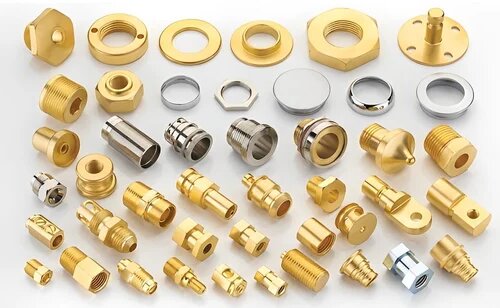
تصنيع النحاس الأصفر ومعالجته
يوفر النحاس الأصفر قابلية تشغيل ممتازة في جميع مراحل الإنتاج. إليك ما يحتاج المهندسون إلى معرفته.
تقنيات الصب
يصب هي طريقة رئيسية تستخدم لتشكيل النحاس الأصفر في أجزاء محددة. في هذه العملية، يتم صب النحاس المصهور في قالب. وعندما يبرد، فإنه يتصلب إلى الشكل المطلوب. يُستخدم صب النحاس الأصفر عادةً في صناعة الأجزاء ذات التصميمات المعقدة أو في عمليات الإنتاج الكبيرة.
القدرة على التصنيع
تشتهر سبائك النحاس الأصفر بقابليتها الجيدة للتشغيل الآلي، مما يجعلها سهلة التشكيل أو القطع باستخدام الأدوات الآلية. وهذا ما يجعل النحاس الأصفر شائعاً في التصنيع والسباكة والأعمال الكهربائية، حيث تكون الدقة مهمة.
اللحام واللحام
يمكن أن يكون النحاس الأصفر ملحومة و ملحومولكن يجب توخي الحذر بسبب تركيبها. يمكن أن تسبب سبائك النحاس ذات المحتوى العالي من الزنك مشاكل أثناء اللحام. يمكن أن يؤدي ذلك إلى عيوب مثل تبخير الزنك أو المسامية في اللحام.
خاتمة
النحاس الأصفر مادة مرنة ومستخدمة على نطاق واسع في العديد من الصناعات. وهو معروف بخصائصه الميكانيكية القوية ومقاومته الجيدة للتآكل وسهولة تصنيعه. توجد أنواع مختلفة من سبائك النحاس الأصفر، والنحاس الأصفر، والنحاس الأحمر، والنحاس البحري. ولكل نوع منها فوائده اعتماداً على تركيبته وخصائصه.
هل تحتاج إلى مساعدة في اختيار السبيكة النحاسية المناسبة لمشروعك؟ اتصل بنا اليوم. سنعمل معك لإيجاد أفضل حل نحاسي يناسب احتياجاتك!
مهلا، أنا كيفن لي

على مدى السنوات العشر الماضية، كنت منغمسًا في أشكال مختلفة من تصنيع الصفائح المعدنية، وشاركت رؤى رائعة هنا من تجاربي عبر ورش العمل المتنوعة.
ابقى على تواصل

كيفن لي
لدي أكثر من عشر سنوات من الخبرة المهنية في تصنيع الصفائح المعدنية، وتخصصت في القطع بالليزر، والثني، واللحام، وتقنيات معالجة الأسطح. كمدير فني في شنغن، أنا ملتزم بحل تحديات التصنيع المعقدة ودفع الابتكار والجودة في كل مشروع.

